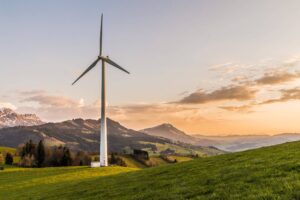Edward's Enterprises team performs many wooden subfloor repairs in Woodland Hills such as:
-
Wood sub floor installed
-
Particle board subfloor replaced
-
Subfloor wood tear out
-
Mobile home subfloor repairs
-
Modular home floor insulation fixed
-
Trailer home under wrap repaired
-
Floor joist repairs
-
Water damage repair
-
Squeaky wood floors fixed
-
Wood blocking installed
With over 20 years in the home improvement trade we have the perspective & know-how critical to carrying out projects of any size, including your next wood subfloor repair.
Wondering if we can assist you with your wood sub floor replacement? Call our team to explain your subfloor installation project!
- Handy Tips
- Did You Know?
- Other Work
- DIY FAQs
Subflooring is part of the substructure. It is underneath the flooring in your home. The subfloor is usually constructed from 1 by 4 or 1 by 6 lumber or plywood panels. When using lumber, the panels are laid diagonally across joists & when using plywood the boards are laid in a staggered fashion, with the ends & edges butted together & the panels nailed to the joists. The whole purpose of the sub floor is to support the central floor, or main floor.
The four types of subfloor are plywood (which was mentioned before), plank sub flooring, oriented strand board sub flooring & concrete slabs. Each one of the prior subfloors would be used depending on what type of floor you would like to install. The common floors include 3/4 thick solid wood flooring, engineered wood flooring, floating wood floors & laminate flooring. In some cases, you can even add on new sub floors in place of old ones, as long as you properly add the underlayments needed & remove the old tiles first.
At the end, walk around across the entire floor. Check for uneven areas, squeaks & all else. See if it's a floor that looks & feels well-finished!
Perfect Plywood Underlayment – Types of Screws
To ensure the bearings on your floors are doing their job, holding up their full weight without any unwanted creaking, cracking, or anything else, you'll want to secure those floor joists properly. & this all deals with your subfloor area, of course. Let's have a closer look at how you can get those screws in there “just right” & some further information on the matter.
How Does Each Screw Function?
First of all, you should know that we've generally got two kinds of screw to choose from, for this type of job : regular steel screws & galvanized steel screws. #8 screws, #10 screws & #12 screws are ideal for when it comes to 3/4-inch plywood, the goal being to securing it correctly onto those floor joists the first time around.
Screw Head Options
There are multiple kinds of screw heads. Each screw head, in turn, will usually come indented to allow the drill head used with it, if it's the right match, to put some torque onto that screw.
Efficiency
This, as you can imagine, helps the overall process to go more smoothly & efficiently as one drills right into the plywood.
Budget
You can pick up a box of screws, generically speaking, for about as low as $2 per box of 100 screws or so. The price may rise to even $150, for more quantity & higher quality. For screw heads, expect to pay from about $5 to $110 for a box. Sales taxes have not been factored into the final costs.
Can you repair subfloor from underneath?
How to know when to replace your subfloor
Factors such as an exposure to moisture or a leaking pipe can be enough alarms for you to replace your subfloor. As the floor gets slippery, you better check what's up with your subfloor.
What's a subfloor?
A subfloor is a material that sits underneath your original floor, which can be tiles, hardwood, or a carpet.
Purpose of a subfloor
The main purpose of the subfloor is to ensure that it keeps moisture away, & this is the main reason many houses require it. However, if you have a way to ensure that there are zero leaks & proper moisture maintenance, there's no need to get one.
Indicators of damaged subfloors
Several red flags will point out a damaged subfloor which includes
1. Having uneven floor or ones that are sunken.
2. Hearing loud squeaks on the floorboards.
3. You're having the smell of mold or mildew in the room.
4. Bouncing or shifting floors when walking around.
5. Have a loose & rocking toilet.
6. Visibly cracked floor tiles.
7. Get capping hardwood floor.
8. See blubbing up linoleum floor.
9. Experience a leaking ceiling.
The lifespan of a subfloor
Subfloors will last depending on how well you maintain them. If it's in good shape, it can serve you for up to 20 – 30 years.
Cost of replacing a subfloor
It'll depend on the contractor, the kind of labor, & materials to be used, but on average, it's $450 – $2000.
FAQ Source
When should I replace my subfloor from water damage?
The signs that indicate you need to replace your subfloor
Several things should tell you that it's about time that you replace your subfloor. Such indicators will help you assess the damage & determine what kind of repair should be done. These signs include
1. Loud squeaks
When your steps begin to produce louder squeaks than normal, you should find out if your subfloor has an issue.
2. Sinking parts
Sinking parts is an indication that you have a loose subfloor part somewhere that needs fixing.
3. Cupping floorboard
Cupping of the floorboard indicates that moister loosened the grip of the floor, & upon drying, it adapted to the taco-like shape.
4. Cracked tiles
Popping or cracked tiles are a clear indication that your subfloor underneath is damaged & needs some fixing.
5. Water damage
Whether it's a leaking sink or ceiling, you better check on your subfloor since that water must have been drained in there.
Tips on repairing the subfloor
When figuring out how you'll deal with the repair of your subfloor, you have to follow a couple of steps to ensure that you don't leave anything. The procedure involves
1. Assess the damage on the subfloor to know what's wrong.
2. Determine the kind of damage you're dealing with so that you can move forward to the repair.
3. Block any leaks before fixing anything to avoid contact with water.
4. Fix any water damages before proceeding to avoid any similar cases.
5. Replace the damaged subfloor.
FAQ Source

 We charge for all time included in a customer's project, including purchasing or delivering materials, & offsite work like painting lumber prior to an installation, or for the time to haul away debris. This allows us to take on smaller projects for our customers, rather than only lump sum projects with much higher minimums to show up.
We charge for all time included in a customer's project, including purchasing or delivering materials, & offsite work like painting lumber prior to an installation, or for the time to haul away debris. This allows us to take on smaller projects for our customers, rather than only lump sum projects with much higher minimums to show up.




 Most projects get a 3 hour window of arrival, so expect something like 7am to 10am, or 10am to 1pm, or even 12pm to 3pm window.
Most projects get a 3 hour window of arrival, so expect something like 7am to 10am, or 10am to 1pm, or even 12pm to 3pm window.